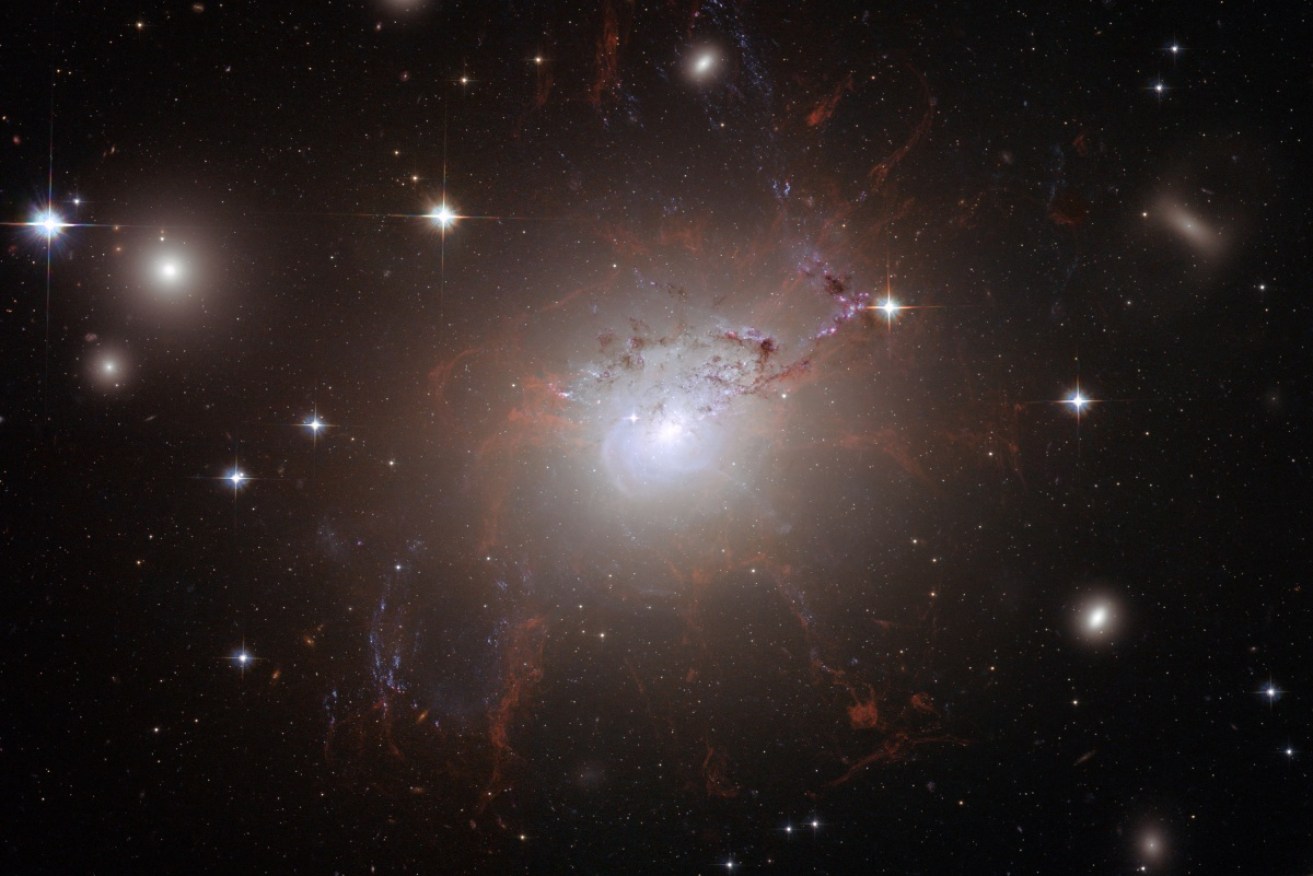Mysterious radio signals discovered from alien galaxy


Fast radio bursts are bright pulses thought to originate from distant galaxies. Photo: Getty
Scientists searching for signs of extraterrestrial life in the universe have discovered 72 unidentified signals emanating from a galaxy three billion light years from Earth.
Researchers at the Search for Extraterrestrial Intelligence (SETI) in California found the signals, known as fast radio bursts, or FRBs, while using artificial intelligence to examine 400 terabytes of radio data from a dwarf galaxy.
The nature of the object emitting them is still unknown, with theories ranging from highly magnetised neutron stars, blasted by gas streams near to a supermassive black hole, to suggestions that the burst properties are consistent with signatures of technology developed by an advanced civilisation, SETI said.
FRBs are bright pulses of radio emission, just milliseconds in duration, thought to originate from distant galaxies.
“Not all discoveries come from new observations,” executive director of SETI’s Breakthrough Initiatives, Pete Worden said in a statement.
“In this case, it was smart, original thinking applied to an existing dataset. It has advanced our knowledge of one of the most tantalising mysteries in astronomy.”
According to the University of California Berkeley, most fast radio bursts are one-offs, but the source here, known as FRB 121102, is unique in emitting repeated bursts.
The observations made in August 26, 2017 with the Green Bank Telescope (GBT) in West Virginia, found a total of 21 bursts.
All activity was seen within one hour, suggesting frenzied activity, Berkeley SETI postdoctoral researcher Vishal Gajjar said.
However, a search for deeper understanding using new, more powerful technology learning algorithms found an additional 72 bursts from the original 400tb of data.
“This work is only the beginning of using these powerful methods to find radio transients,” Berkeley PhD student Gerry Zhang said.
“We hope our success may inspire other serious endeavors in applying machine learning to radio astronomy.”
The findings have been accepted for publication in the Astrophysical Journal.
The unexplained FRBs come after Harvard University scientists last year determined the flashes of energy could be evidence of aliens powering interstellar spacecraft.
The Harvard team also suggested FRBs could be leaked energy from powerful transmitters built in order to send giant light sail ships on interstellar voyages.








